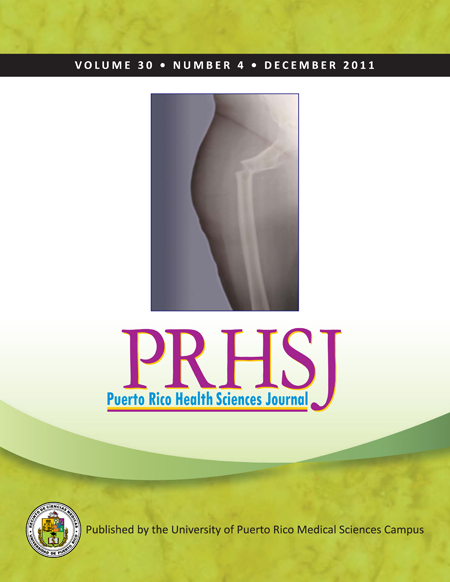Abstract
Objective: We undertook a retrospective study to evaluate strabismus surgeries done at the University Hospital and at the University Pediatric Hospital of the Puerto Rico Medical Center. Methods: The surgery schedules ranging from January 2003 to December 2007 were reviewed. Three types of strabismus were evaluated, including esotropia, exotropia, and hypertopia. Differences in the distribution of strabismus type according to age group and gender were assessed using the extension of the Fisher’s exact test. Results: A total of 120 patients were included (56 males and 64 females); the patients ranged in age from 4 months to 70 years (average: 15.1 years. Analysis of the distribution of strabismus type showed that 63 (52.5%) had esotropia; 49 (40.8%) had exotropia; 4 (3.3%) had hypertropia; 3 (2.5%) had both hypertropia and exotropia; and 1 (0.9%) had both hypertropia and esotropia. Both esotropia and exotropia were significantly (p < 0.0001) more common in children than they were in adults; however, hypertropia and combined strabismus types were more common in adults than they were in children. There was no statistical (p > 0.05) significance found upon analyzing strabismus distribution according to gender. Conclusion: Among patients with this eye disorder at the Puerto Rico Medical Center, the most common type of surgically treated strabismus was esotropia. Further studies will elucidate the prevalence of strabismus in Puerto Rico.
Authors who publish with this journal agree to the following terms:
a. Authors retain copyright and grant the journal right of first publication with the work simultaneously licensed under a Creative Commons Attribution License that allows others to share the work with an acknowledgement of the work's authorship and initial publication in this journal.
b. Authors are able to enter into separate, additional contractual arrangements for the non-exclusive distribution of the journal's published version of the work (e.g., post it to an institutional repository or publish it in a book), with an acknowledgement of its initial publication in this journal.
c. Authors are permitted and encouraged to post their work online (e.g., in institutional repositories or on their website) prior to and during the submission process, as it can lead to productive exchanges, as well as earlier and greater citation of published work (See The Effect of Open Access).
